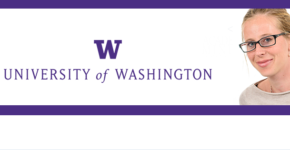 Learning a second language can be important for the future.
Learning a second language can be important for the future.
Naja Ferjan Ramirez, research scientist at the Institute for Learning and Brain Sciences at the University of Washington, examines how learning from a very young age can have many advantages.
Naja Ferjan Ramirez, Ph. D., is a Research Scientist at the Institute for Learning & Brain Sciences (I-LABS) at the University of Washington. Naja earned her Bachelor’s degree in Neuroscience from Brown University and her Ph.D. in Linguistics and Cognitive Science from the University of California, San Diego. Her research broadly focuses on understanding language acquisition in populations from various linguistic backgrounds. Naja conducts brain (magnetoencephalography) and intervention studies with babies who are simultaneously acquiring two languages. She is also a mother of two young children who are learning three languages (Slovene, Spanish, and English).
Building Bilingual Brains
In today’s global world, being bilingual has many advantages: it opens up job opportunities, allows us to think more flexibly, and even protects us against Alzheimer’s disease. The question we should be asking then is…What if we could prepare all children to enter school knowing not one, but two languages?
Studies show that babies are born with an incredible ability to hear the differences between the sounds of all languages; which is something that adults can no longer do. Babies are born citizens of the world, but over time, their brain specializes to process the language that they hear most often – their native language.
However, my research shows that the infant brain can just as easily specialize to process two languages. Babies who grow up in families where two languages are spoken can become native speakers of both.
So the question still remains: can we provide ALL young children with an opportunity to experience a second language during this critical time in development when their brains are primed for language learning?
I think we can! Our research team recently developed a teaching method and curriculum for very young children, aged 0-5, to be used by early education centers who want to teach a second language. The method is based on decades of brain and behavioral research summarized in 6 research principles, and implemented through play-based interactions. We recently tested the method in Madrid, Spain, and have shown that it produces extremely rapid second language learning in just an hour a day, over a period of 4.5 months.
We’re currently in the process of manualizing the method to make it available to early education centers in the United States and worldwide. Our goal is to give all children an opportunity to harness the brain’s natural capacity and learn not one, but two languages, before entering school.

Comments
5 responses to “Naja Ferjan Ramirez, University of Washington – Building Bilingual Brains”
I could not agree more. Learning more than one language has such a positive impact on one’s brain.
I have two little girls, but even though I am bilingual and Spanish is my first language, I have been slacking when it comes to teaching my girls Spanish. Do you have any advise I could use to be more active about teaching my kids my own mother tongue?
Speak to them in Spanish!
I am very interested in hearing more about this curriculum. I am a teacher of a dual immersion preschool program and I have mostly used methods that I have learned during my 30 years of experience working with children. Teachin Spanish to my students has become my passion.
I am a rookie father. I am fluent in English, Cantonese and Mandarin. I am very interested about your curriculum as i want to build my 1 week old daughter into a bilingual baby as well. How do I find out more?
I have been training English speaking teachers to introduce English to Spanish, Portuguese and Italian speaking babies since 2001. I developed a programme that introduces English to babies through playgroups which babies attend with their care-givers just once a week while being supported by guided exposure to English at home. These are led by English speaking people which use e a series of games and activities to facilitate the development of simultaneous bilingualism. Parents do not need to speak English to help their babies in the process. Since we have been applying this methodology for so many years now, we have evidence of the native-like accent and fluency these people (now adolescents) have acquired.
I am working towards the application of this same methodology to teach Spanish as well.
You can contact me if you want more info. about my curriculum and training program ([email protected]).